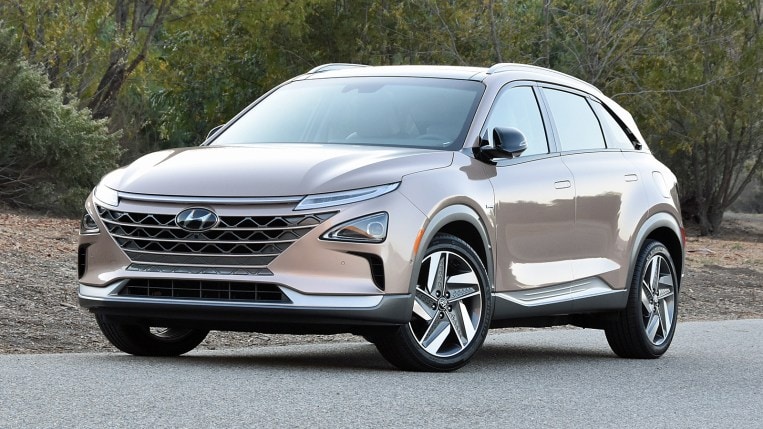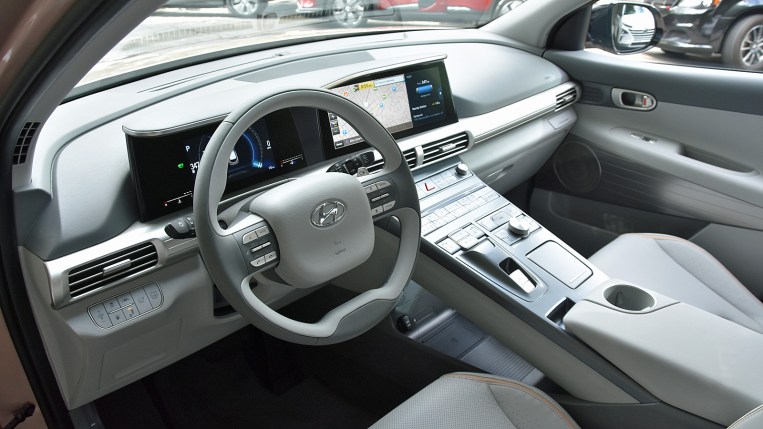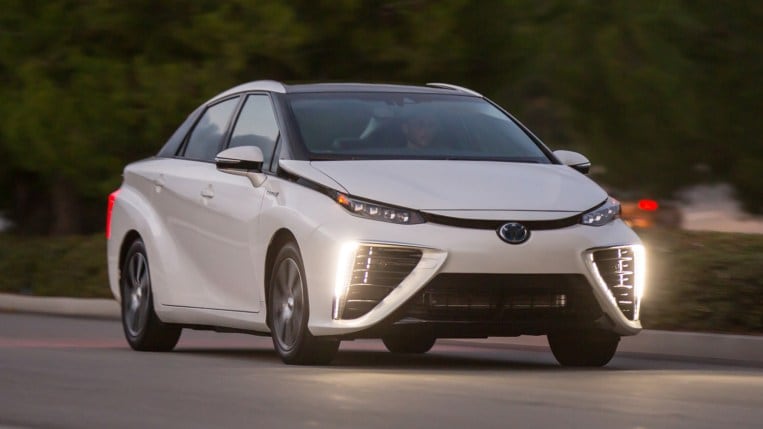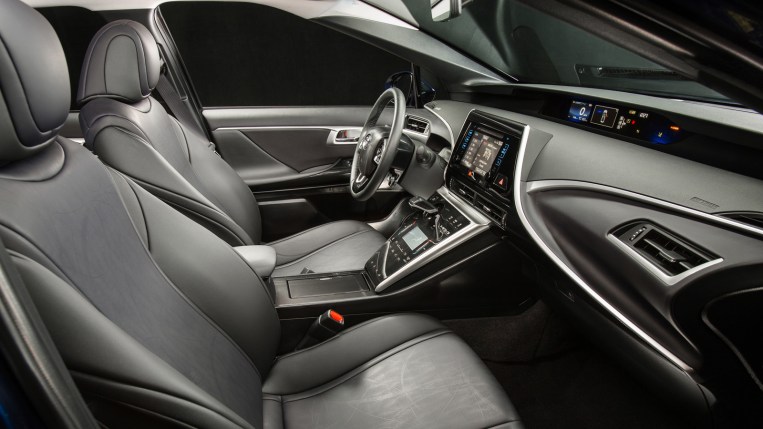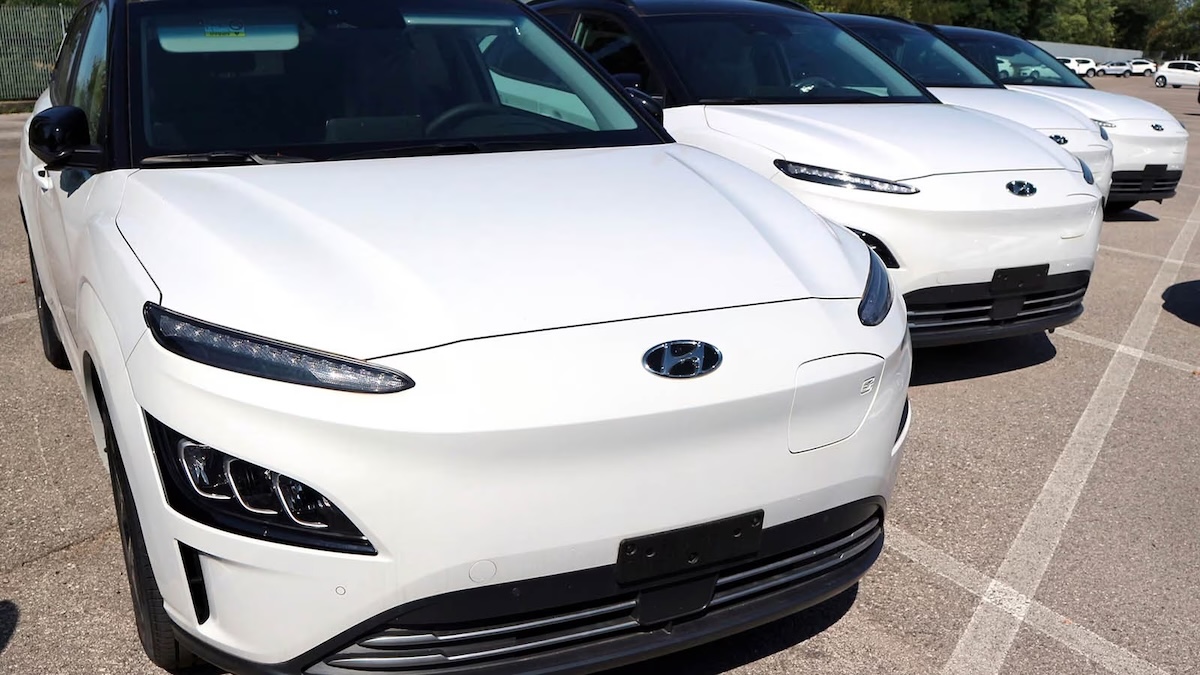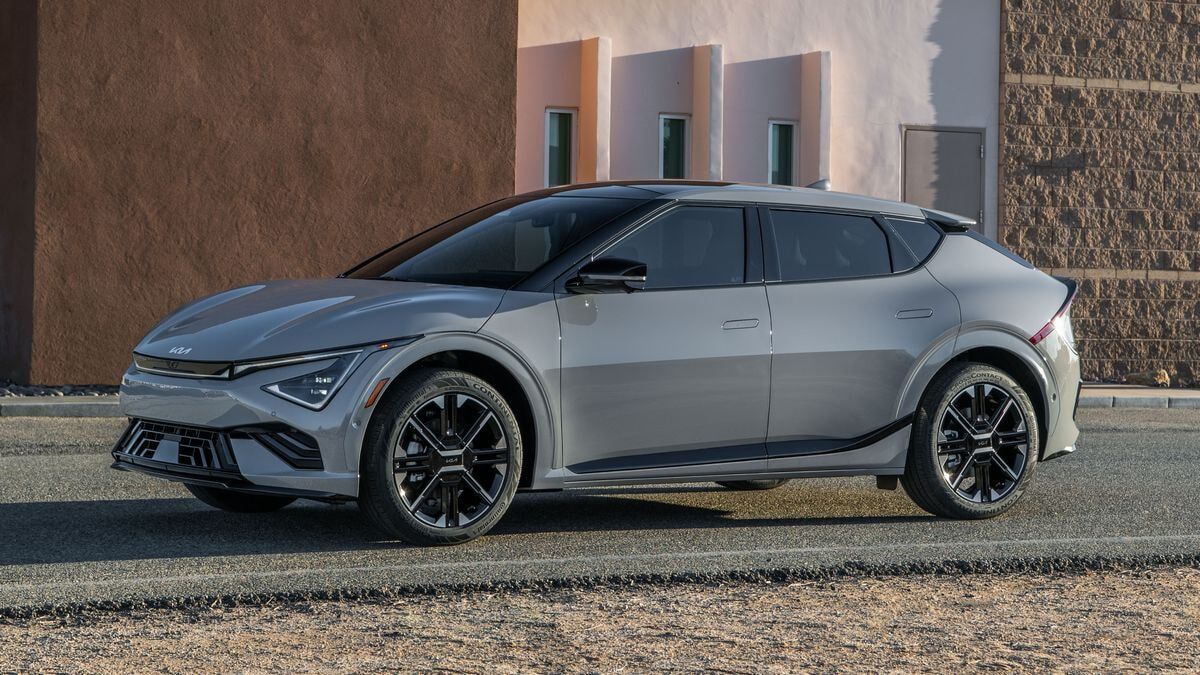As this guide shows, fuel cell vehicle shoppers have choices limited to just three models in just three cities. If you live in or near Los Angeles or San Francisco, you need to visit a Honda, Hyundai, or Toyota dealership. Toyota also offers its FCEV in Honolulu, Hawaii. Beyond these specific model and geographic restrictions, Honda won’t sell you its FCEV. You must lease it.
Still interested? Let’s take a closer look at the three FCEV models that you can drive today.
Honda Clarity Fuel Cell Vehicle
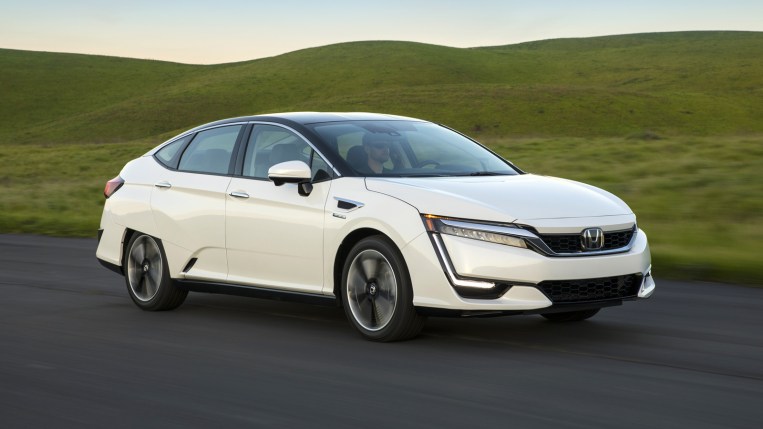
The Honda Clarity Fuel Cell is a midsize 5-passenger sedan equipped with a trunk that holds 11.8 cubic feet of cargo. Aerodynamically styled, the Clarity Fuel Cell blends familiar Honda design cues with unusual details such as its hockey-stick LED running lights, rear fender skirts, and dramatic fastback roofline.
Interior
Inside, the Clarity Fuel Cell looks upscale and futuristic. Everyone is comfortable, and Acura-grade materials lend the car a luxurious look and feel. Honda says that 80 percent of the interior is composed of eco-conscious materials.
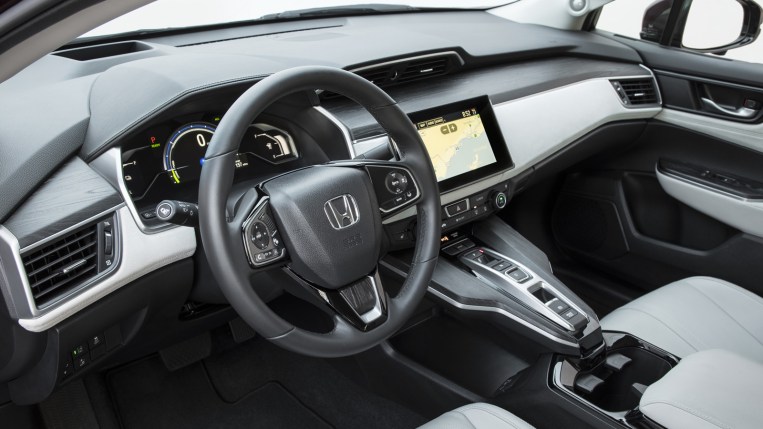
Output
Honda equips the Clarity with a fuel-cell electric powertrain providing 174 horsepower and 221 lb.-ft. of torque, and there is a Sport driving mode. Remember, like any electric vehicle, maximum torque is available from the moment you step on the accelerator.
Honda says that the Clarity Fuel Cell gets 68 MPGe in combined driving, and can travel as far as 366 miles between visits to the fueling station. Like the other FCEVs in this guide, it takes about five minutes to fill the tank with compressed hydrogen gas. A HondaLink smartphone app helps you to find the nearest hydrogen fueling station, shows whether the station is on-line or off-line, and provides directions to it.
Pricing
The Honda Clarity Fuel Cell is only available in select regions of California and through a lease. For those who qualify, it’s a sweet deal. You’ll pay about $380 per month (plus tax), with approximately $2,500 down plus the first month’s payment. Over the 3-year period, Honda includes 21 days of luxury-car rentals and $15,000 worth of free hydrogen fuel. Plus, the car is also eligible for a $4,500 rebate via the California Clean Vehicle Rebate Project. Find a Honda Clarity near you.
Hyundai Nexo
The Hyundai Nexo is a 5-passenger vehicle styled and packaged like a crossover SUV. But since it doesn’t offer all-wheel drive, it’s really more of a hatchback or wagon. Cargo space measures a reported 29.6 cu.-ft. behind the rear seat, including an underfloor storage compartment. With the rear seat folded down, the Nexo can handle 56.5 cu.-ft. of cargo.
The Nexo wins the styling and design competition among FCEVs. Hyundai’s chief designer, Chris Chapman, says that stones skipping across a pond and southwestern desert landscapes inspired the vehicle’s clean and calming appearance.
Interior
Inside, the driver and front passenger face what Hyundai calls a “flight deck.” Extensive use of bio-friendly materials ensures environmental responsibility, and the Nexo features dual widescreen digital displays for the instrumentation and infotainment systems. The center console is littered with buttons and knobs, but their markings can be difficult to see because of the silver surface finish.
The standard trim is called Blue, while the more expensive version of the Nexo is known as the Limited. It adds larger 19-inch aluminum wheels, leather seats, a Krell premium audio system, a Lane Follow Assist system, blind-view video monitoring of both sides of the car, and a high-tech remote parking-assist system that can park the Nexo while you’re standing outside of it.
Output
The fuel-cell electric powertrain supplies 161 hp and 291 lb.-ft. of torque, and features Comfort, Eco, and Eco+ driving modes. The maximum travel range with Blue trim is 380 miles at 61 MPGe in combined driving, while the Nexo Limited can go 354 miles at 57 MPGe combined. Owners can use a smartphone app or the Nexo’s navigation system to locate hydrogen fueling stations and to get directions to them.
Pricing
You can buy the Nexo Blue for $58,300. Limited trim costs $3,500 more. Federal and California state incentives help to lower the cost, though some of these take your annual income into account.
Alternatively, you can lease a Nexo Blue for $399 per month or a Nexo Limited for $449 per month. When you lease, Hyundai keeps the government incentives to lower the cost of the payments, which do not include taxes, fees, or other charges.
Hyundai provides Nexo fuel cell vehicle owners with $12,000 in free hydrogen fuel during the first three years, which is less than the competition. Hyundai matches Honda and Toyota in terms of free car rentals, though. You can get seven days of no-cost car rentals each year during the first three years of ownership. Find a Hyundai Nexo near you.
Toyota Mirai
The Toyota Mirai launched in the 2016 model year. This midsize sedan offers 4-passenger seating and provides 12.8 cu.-ft. of trunk space.
Perhaps the most extreme example of Toyota’s latest catamaran-inspired design language, the quirky-looking Mirai’s name means “future” in Japanese. Interior design themes are familiar to anyone who’s been in a newer Camry or Prius, but with discordant lines similar to the car’s exterior styling.
Interior
The center of a strip running beneath the base of the windshield displays instrumentation. The infotainment system sits in a dramatically asymmetrical pod rising from the dashboard. Touch-sensing climate controls reside on an angled portion of the center console, beneath the joystick transmission controller. The control layout is intuitive; it just looks otherworldly.
Output
The Mirai fuel-cell electric powertrain produces 153 hp and 247 lb.-ft. of torque. It returns 67 MPGe in combined driving and supplies 312 miles of driving range on a full tank of compressed hydrogen gas. Thanks to the Mirai’s free 3-year subscription to Safety Connect services, owners can use the navigation or a smartphone app to locate hydrogen fueling stations.
Pricing
You can buy or lease the 2020 Toyota Mirai fuel cell vehicle. It sells for $58,550, plus a destination charge of $955. Toyota’s lease goes for $389 a month (a 36-month lease with $2,499 due at signing).
As an FCEV, the Mirai is eligible for a $4,500 rebate from the state of California.
Every Mirai includes $15,000 in free fuel for the first three years of ownership. You also get as many as 21 days of free car rentals during that same period of time. Maintenance is free during the first three years, too. Find a Toyota Mirai near you.
More: KBB’s Guide to Hybrid Alternative Energy Cars
